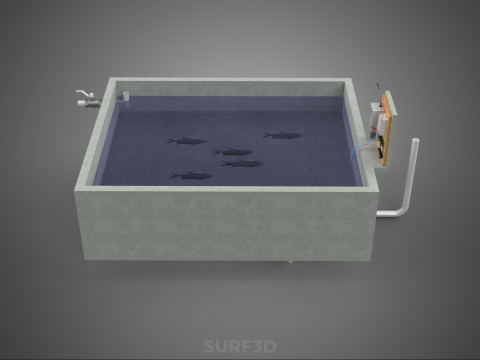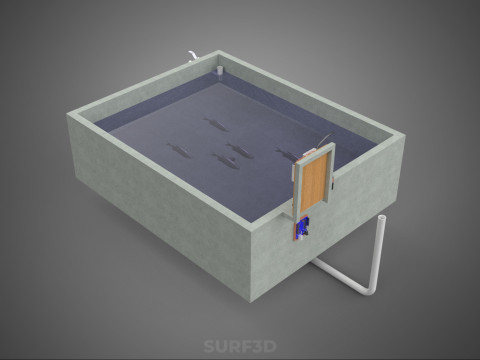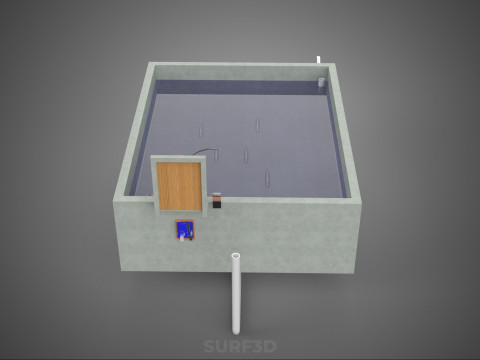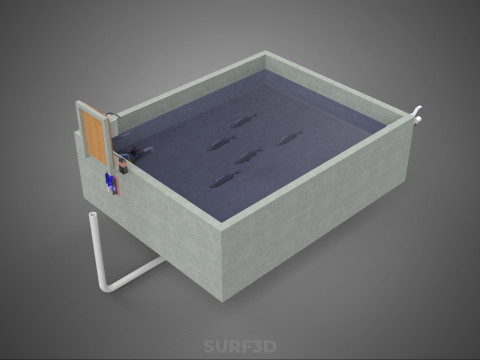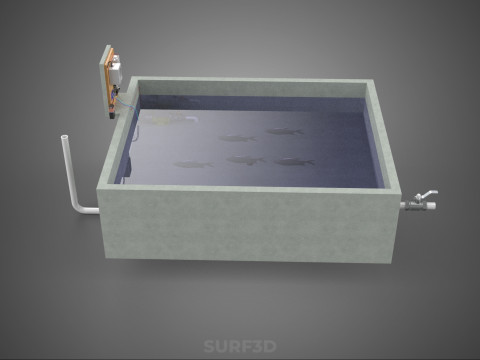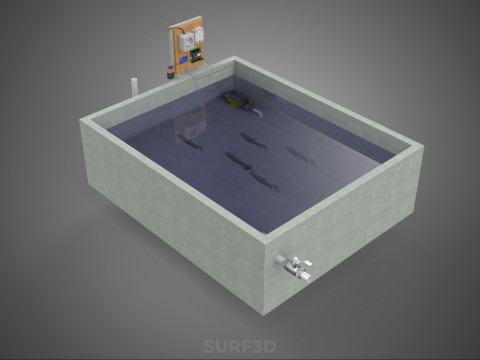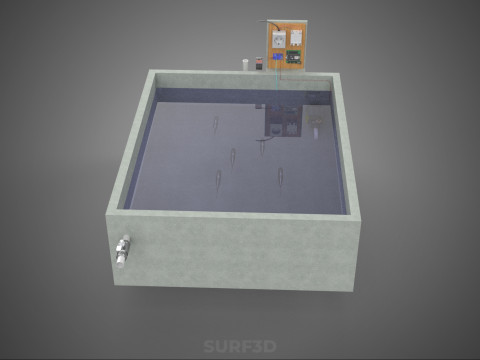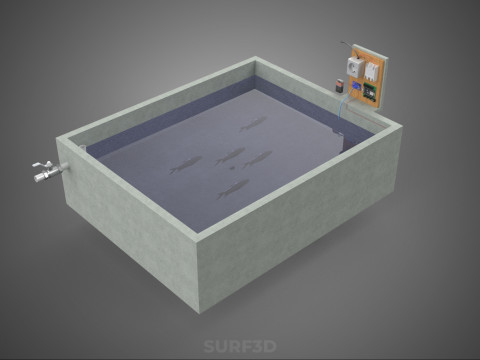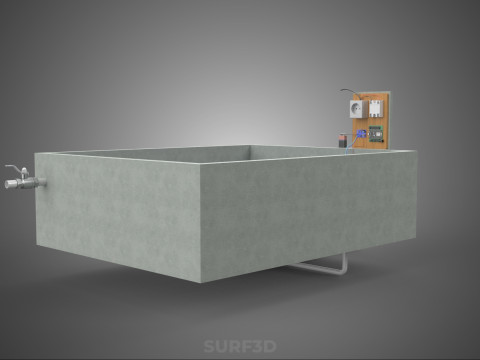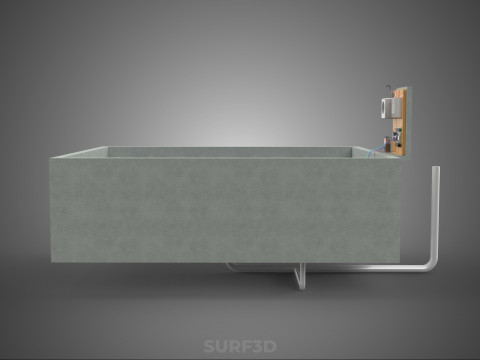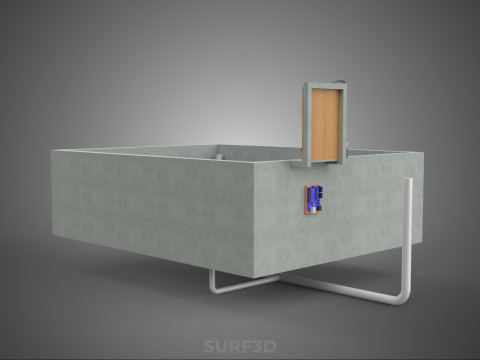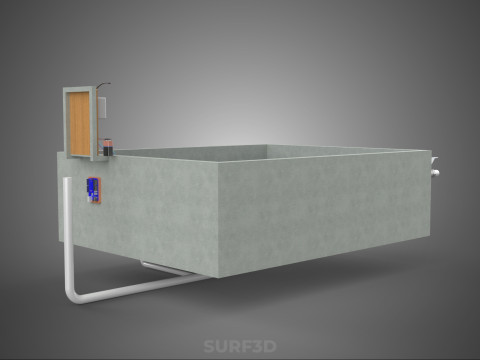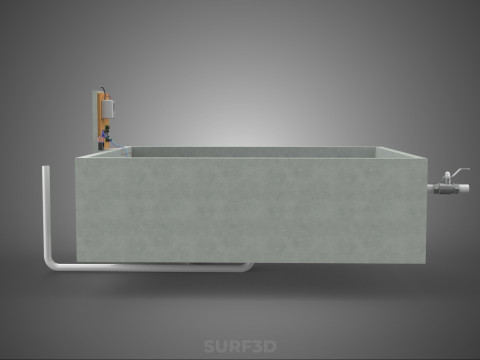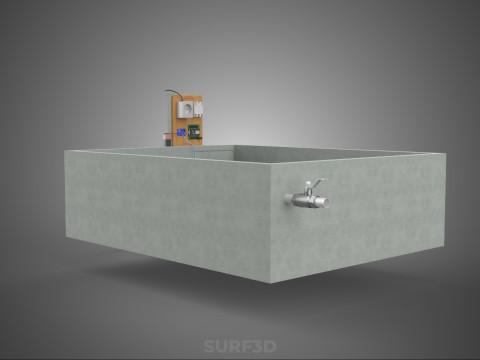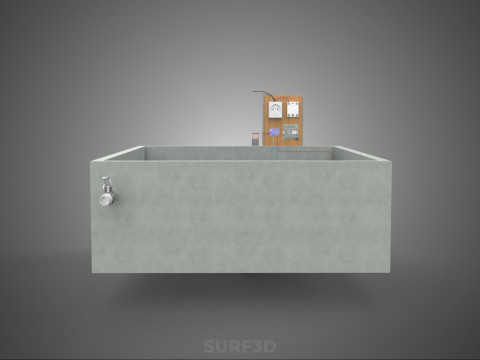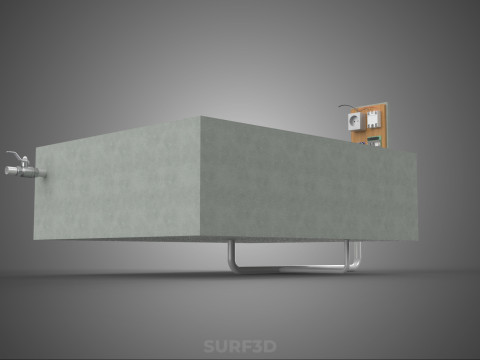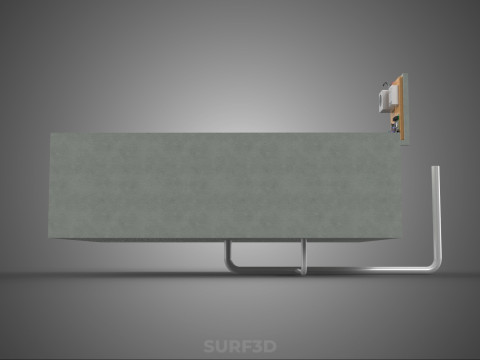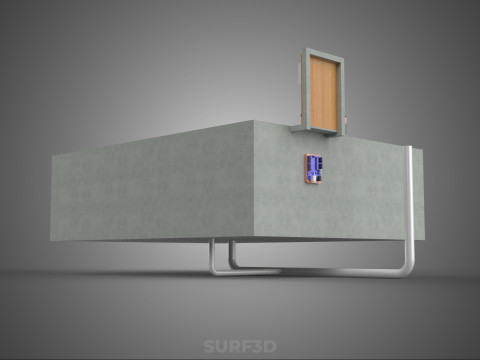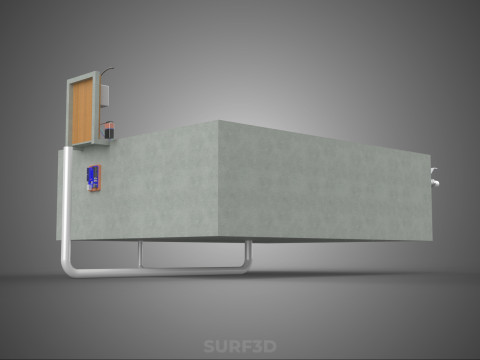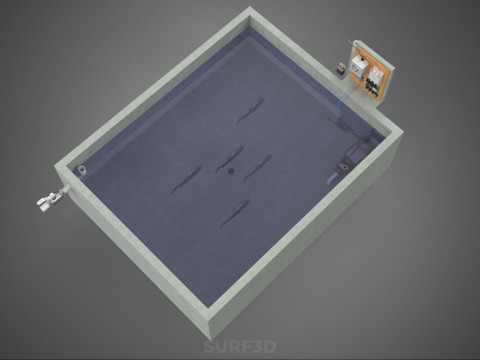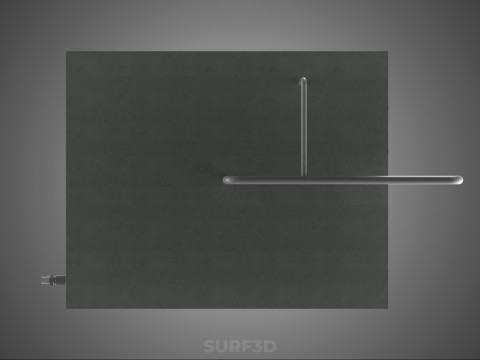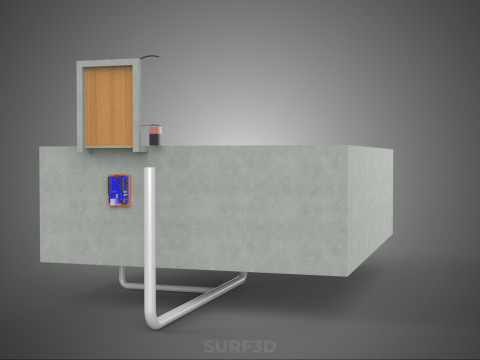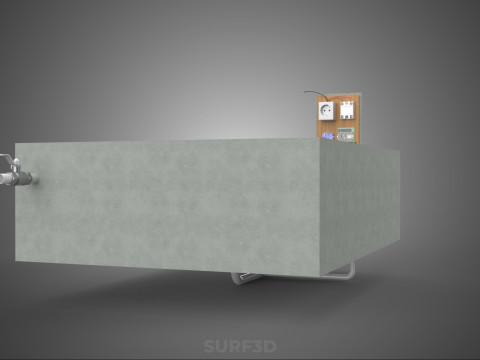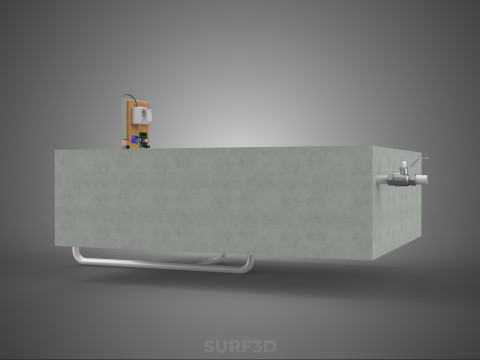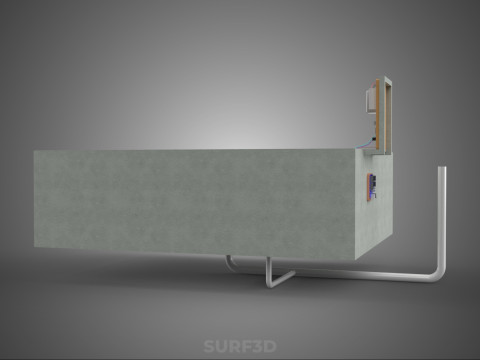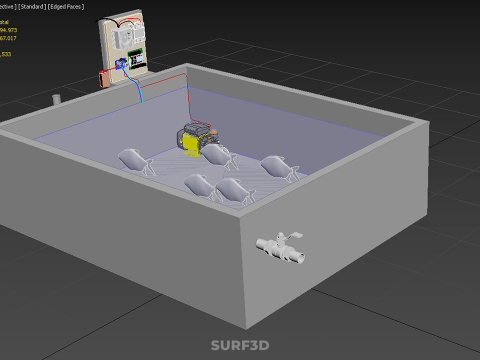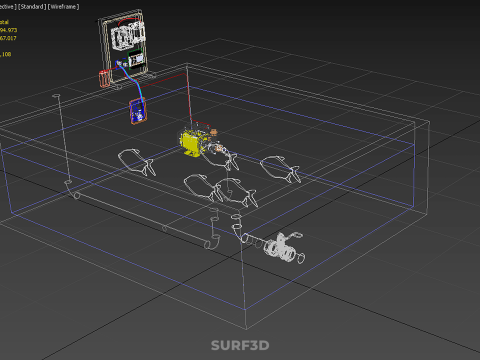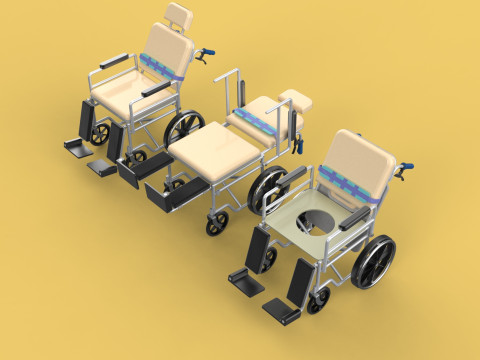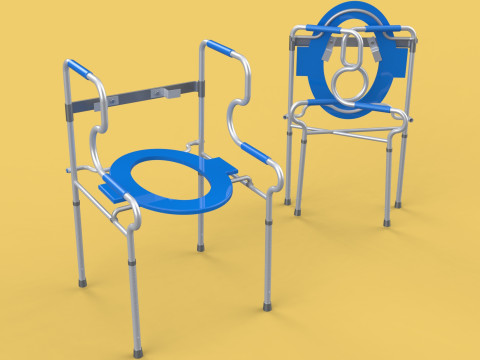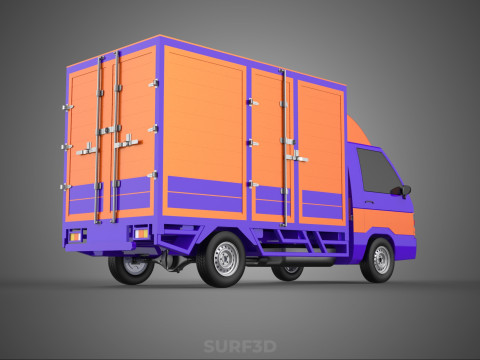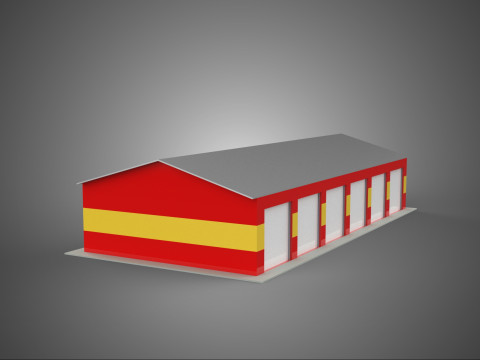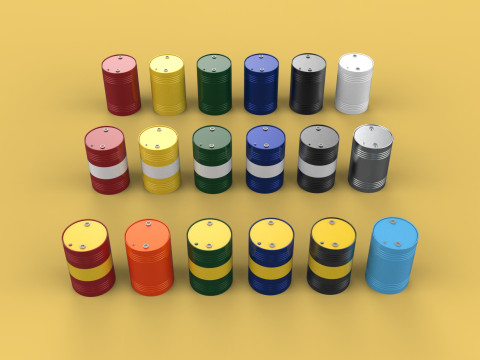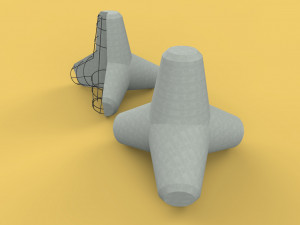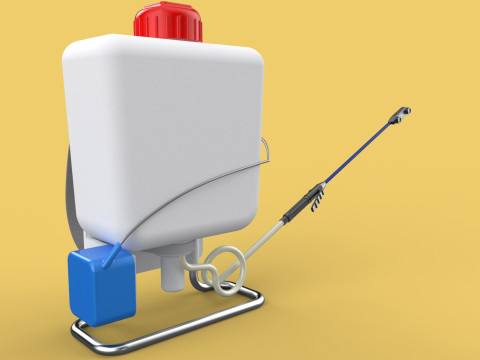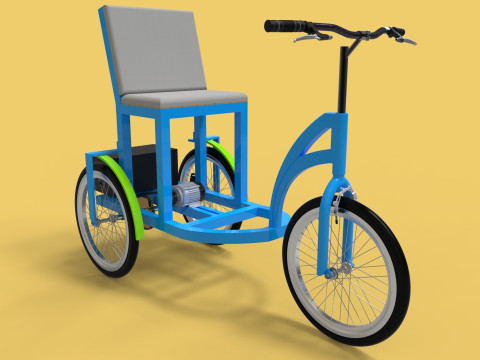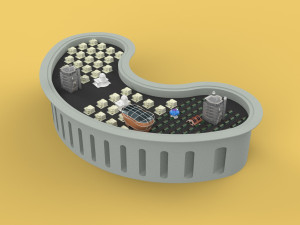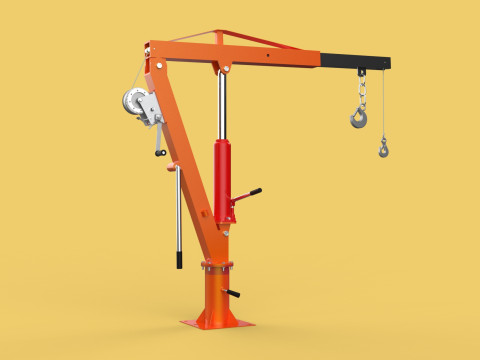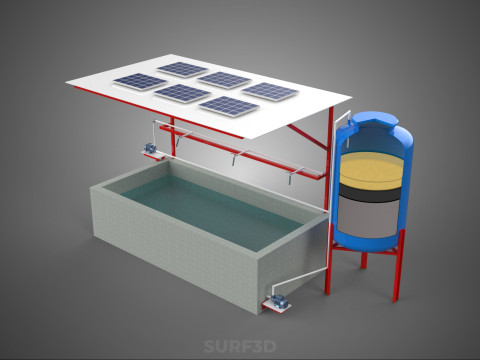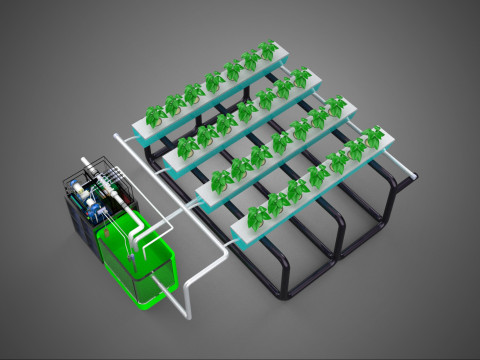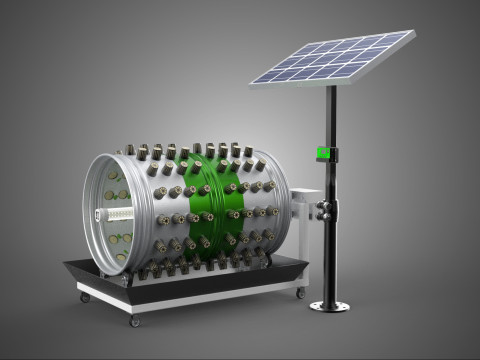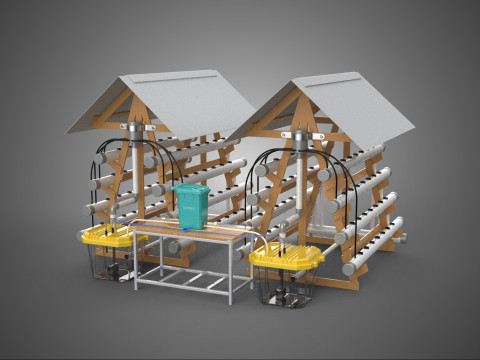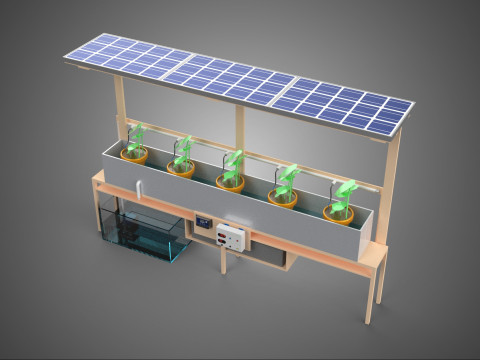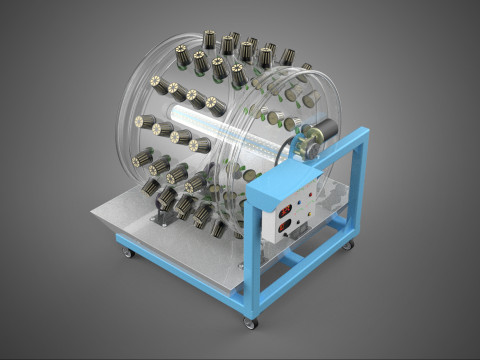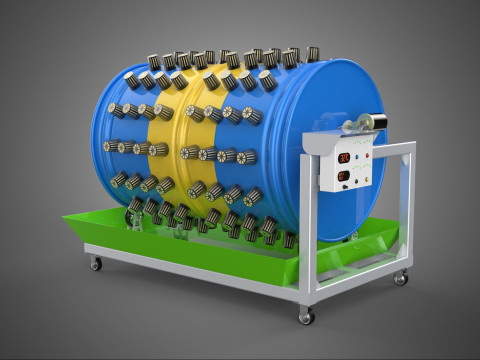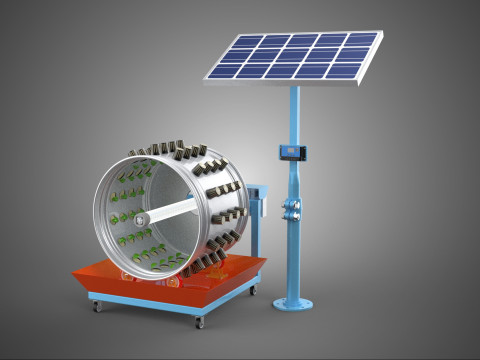IOT SMART FISH POND AQUACULTURE MONITOR WATER LEVEL CIRCULATION 3D Model
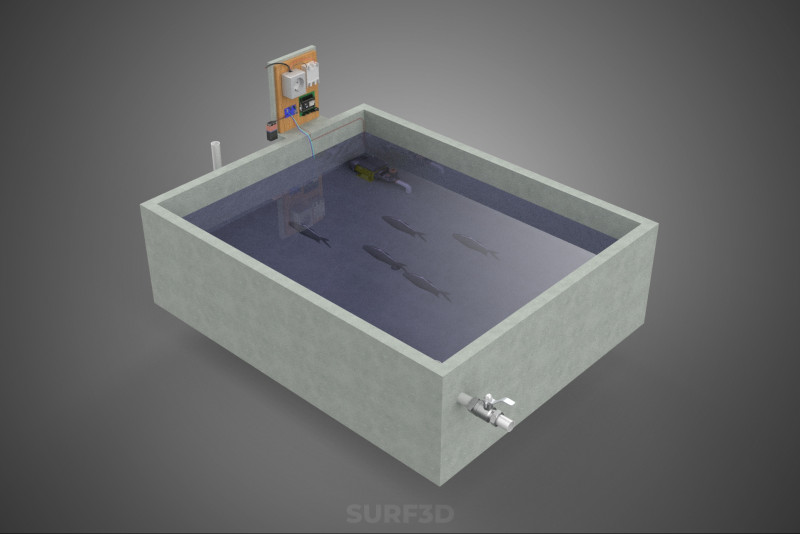
- Request product support by the author
- Available formats:
- Item ID:594822
- Date: 2025-08-26
- Polygons:394973
- Vertices:367017
- Animated:No
- Textured:No
- Rigged:No
- Materials:
- Low-poly:No
- Collection:No
- UVW mapping:No
- Plugins Used:No
- Print Ready:No
- 3D Scan:No
- Adult content:No
- PBR:No
- AI Training:No
- Geometry:Poly NURBS
- Unwrapped UVs:Unknown
- Views:282
Description
High-quality 3D assets at affordable prices — trusted by designers, engineers, and creators worldwide. Made with care to be versatile, accessible, and ready for your pipeline.
Included File Formats
This model is provided in 14 widely supported formats, ensuring maximum compatibility:
• - FBX (.fbx) – Standard format for most 3D software and pipelines
• - OBJ + MTL (.obj, .mtl) – Wavefront format, widely used and compatible
• - STL (.stl) – Exported mesh geometry; may be suitable for 3D printing with adjustments
• - STEP (.step, .stp) – CAD format using NURBS surfaces
• - IGES (.iges, .igs) – Common format for CAD/CAM and engineering workflows (NURBS)
• - SAT (.sat) – ACIS solid model format (NURBS)
• - DAE (.dae) – Collada format for 3D applications and animations
• - glTF (.glb) – Modern, lightweight format for web, AR, and real-time engines
• - 3DS (.3ds) – Legacy format with broad software support
• - 3ds Max (.max) – Provided for 3ds Max users
• - Blender (.blend) – Provided for Blender users
• - SketchUp (.skp) – Compatible with all SketchUp versions
• - AutoCAD (.dwg) – Suitable for technical and architectural workflows
• - Rhino (.3dm) – Provided for Rhino users
Model Info
• - All files are checked and tested for integrity and correct content
• - Geometry uses real-world scale; model resolution varies depending on the product (high or low poly)
• • - Scene setup and mesh structure may vary depending on model complexity
• - Rendered using Luxion KeyShot
• - Affordable price with professional detailing
Buy with confidence. Quality and compatibility guaranteed.
If you have any questions about the file formats, feel free to send us a message — we're happy to assist you!
Sincerely,
SURF3D
Trusted source for professional and affordable 3D models.
More Information About 3D Model :
**IOT Smart Fish Pond Aquaculture Monitor Water Level Circulation**
IOT Smart Fish Pond Aquaculture Monitoring Water Level and Circulation systems represent a sophisticated integration of Internet of Things (IOT) technology within the aquatic farming industry. This technology aims to optimize the management and productivity of fish ponds by providing real-time data, automated control, and remote oversight of critical environmental parameters. It addresses the traditional challenges of manual monitoring, labor intensity, and delayed responses to adverse pond conditions, thereby enhancing sustainability, efficiency, and yield in aquaculture.
**Core Components and Architecture:**
An IOT smart pond system typically comprises several interconnected components:
1. **Sensors:** A network of specialized sensors is deployed within the fish pond to continuously measure key aquatic parameters. While the title specifically mentions water level and circulation, comprehensive systems often include sensors for:
* **Water Level:** Ultrasonic or pressure-based sensors detect the exact water depth, crucial for managing water volume and detecting leaks or overflow risks.
* **Dissolved Oxygen (DO):** Electro-chemical sensors measure oxygen levels, vital for fish respiration and overall aquatic health.
* **pH:** pH probes monitor the acidity or alkalinity of the water, which affects nutrient availability and fish well-being.
* **Temperature:** Thermistors or RTD sensors track water temperature, influencing metabolic rates, feed intake, and disease susceptibility.
* **Turbidity:** Optical sensors assess water clarity, indicating suspended solids, algae blooms, or poor water quality.
* **Ammonia, Nitrite, Nitrate:** Ion-selective electrodes or colorimetric sensors detect nitrogenous compounds, which are highly toxic to aquatic life.
2. **Microcontroller/Gateway:** Data collected by the sensors is transmitted to a local microcontroller unit (MCU) or gateway device. This unit digitizes, processes, and aggregates the sensor data before sending it to the cloud.
3. **Connectivity Modules:** IOT systems utilize various communication protocols for data transmission, including Wi-Fi for local networks, LoRaWAN for long-range, low-power applications, or cellular (2G/3G/4G/5G) for remote locations without local network infrastructure.
4. **Cloud Platform:** The collected data is securely transmitted to a cloud-based server. This platform provides data storage, advanced analytics, trend analysis, and the execution of predefined algorithms for decision-making.
5. **Actuators/Control Systems:** Based on the data analysis and predefined thresholds, the system can automatically trigger various actuators to maintain optimal conditions. These include:
* **Pumps:** To regulate water level (filling/draining) or enhance water circulation.
* **Aerators:** To increase dissolved oxygen levels, crucial for fish health and preventing stratification.
* **Automated Feeders:** To dispense precise amounts of feed at scheduled intervals, reducing waste and optimizing feed conversion ratio.
* **Valves:** To control water flow into or out of the pond.
6. **User Interface:** Farmers and operators interact with the system through a user-friendly interface, typically a mobile application or a web-based dashboard. This interface provides real-time data visualization, historical trends, alert notifications, and remote control capabilities for actuators.
**Key Functionalities and Benefits:**
* **Precise Water Level Management:** Continuous monitoring allows for automated adjustment of inlet/outlet pumps or valves to maintain optimal water levels, preventing overfilling, drought stress, or ensuring specific depths required for certain species.
* **Optimized Water Circulation and Aeration:** Sensors provide feedback on DO levels and water stratification, enabling automated control of aerators and circulation pumps. This ensures uniform oxygen distribution, prevents stagnant zones, and disperses waste products, crucial for fish health and growth.
* **Real-time Water Quality Assurance:** Beyond water level and circulation, the system monitors a suite of parameters, providing immediate alerts for deviations from optimal ranges, such as sudden drops in DO, abnormal pH, or spikes in ammonia, allowing for timely intervention.
* **Automated and Data-Driven Decision Making:** The system reduces the reliance on manual checks and subjective judgment. Automated responses and data analytics facilitate predictive maintenance and resource optimization (water, energy, feed).
* **Remote Monitoring and Control:** Farm managers can monitor pond conditions and operate equipment from any location with internet access, significantly reducing labor costs and response times.
* **Increased Productivity and Reduced Losses:** By maintaining stable and optimal environmental conditions, the system minimizes fish stress, reduces disease outbreaks, optimizes growth rates, and improves the overall survival rate and yield.
* **Enhanced Sustainability:** Optimized resource use (water, energy, feed) and reduced environmental impact through better waste management contribute to more sustainable aquaculture practices.
**Challenges and Future Directions:**
While offering substantial advantages, IOT smart pond systems face challenges such as initial investment costs, the need for technical expertise in deployment and maintenance, data security concerns, and sensor calibration stability. Future developments are focused on integrating Artificial Intelligence (AI) and Machine Learning (ML) for advanced predictive analytics, anomaly detection, and autonomous decision-making, further enhancing the intelligence and efficiency of aquaculture operations.
Need more formats?
If you need a different format, please send us a Conversion Request. We can convert 3D models to: .stl, .c4d, .obj, .fbx, .ma/.mb, .3ds, .3dm, .dxf/.dwg, .max. .blend, .skp, .glb. Free Format ConversionWe do not convert 3d scenes and solid formats such as .step, .iges, .stp, .sldprt etc!
Usage Information
IOT SMART FISH POND AQUACULTURE MONITOR WATER LEVEL CIRCULATION - You can use this royalty-free 3D model for both personal and commercial purposes in accordance with the Basic or Extended License.The Basic License covers most standard use cases, including digital advertisements, design and visualization projects, business social media accounts, native apps, web apps, video games, and physical or digital end products (both free and sold).
The Extended License includes all rights granted under the Basic License, with no usage limitations, and allows the 3D model to be used in unlimited commercial projects under Royalty-Free terms.
Read more
Do you provide Money Back Guarantee?
Yes, we do. If you purchased a product and found some error in the renders or description, we'll try to fix the problem as soon as possible. If we cannot correct the error, we will cancel your order and you will get your money back within 24 hours from downloading the item. Read more conditions hereKeywords
- farming
- microcontroller
- wifi
- remote
- monitoring
- control
- system
- automatic
- aquarium
- fishpond
- fish tank
- water level
- fishery
- pump
- water pump
- iot based
- pond
- fish
- iot
- water


 English
English Español
Español Deutsch
Deutsch 日本語
日本語 Polska
Polska Français
Français 中國
中國 한국의
한국의 Українська
Українська Italiano
Italiano Nederlands
Nederlands Türkçe
Türkçe Português
Português Bahasa Indonesia
Bahasa Indonesia Русский
Русский हिंदी
हिंदी
